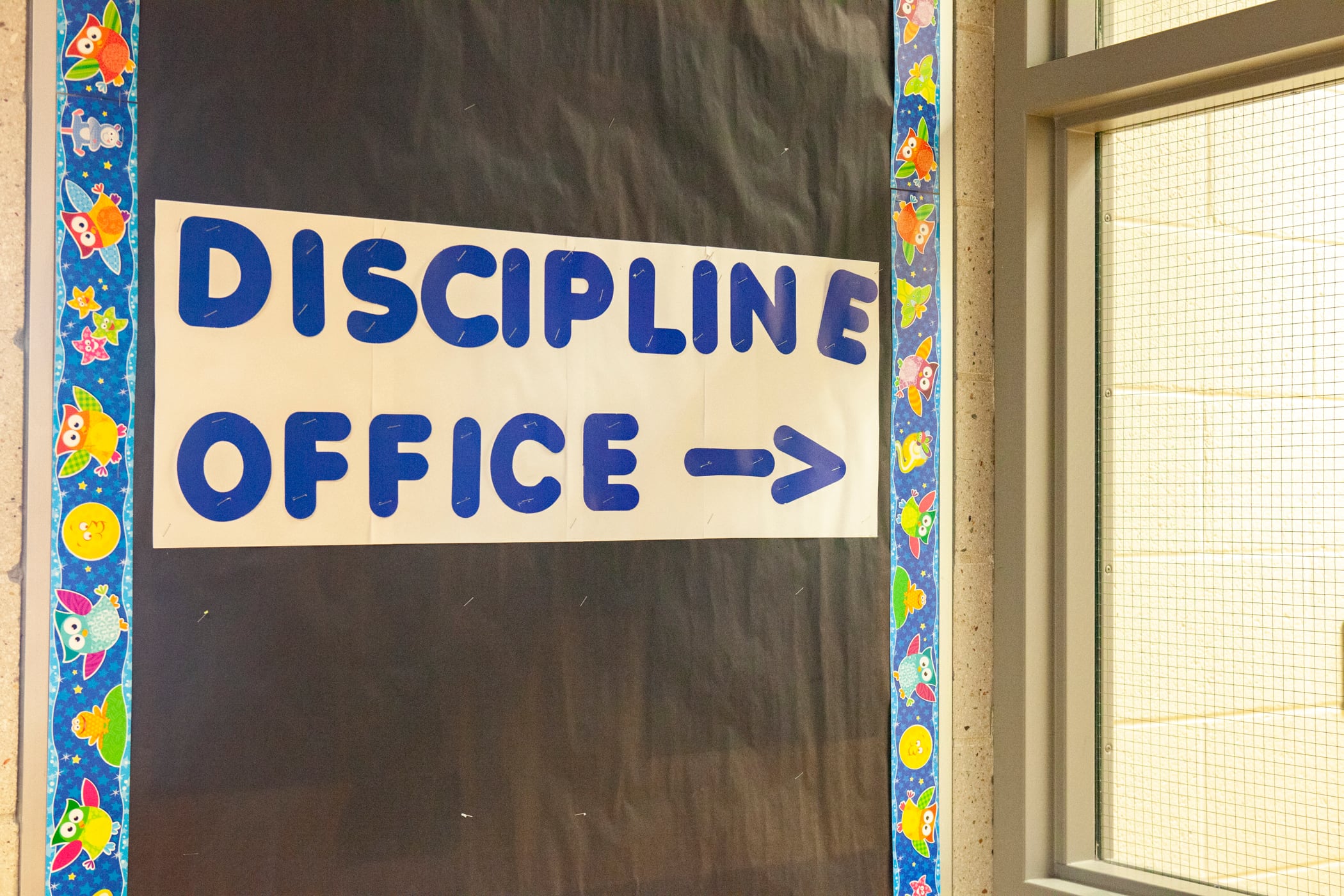Sign up for Chalkbeat’s free weekly newsletter to keep up with how education is changing across the U.S.
The number of students who were suspended or arrested at school fell dramatically during the first full school year of the pandemic, new federal data released Wednesday show.
And though disparities in who got suspended or arrested at school persisted along lines of race and disability, in some cases, those gaps narrowed considerably, especially for Black students.
The data for the 2020-21 school year, released by the U.S. Department of Education’s Office for Civil Rights, echoes earlier reports from some school districts and states. But it’s the first to fully capture what discipline looked like across America’s schools early in the pandemic, when large shares of students were learning remotely.
“Some of these data are not easy to look at,” U.S. Secretary of Education Miguel Cardona told reporters Wednesday. “These data are a reminder that we have a lot of work to do.”
The data come as many schools wrestle with how discipline should look in the wake of a pandemic that left many students with greater social and emotional needs. Some states have considered laws that would give schools broader latitude to suspend students, and some districts have brought back school police following concerns over student behavior and safety.
The report reflects a time when 88% of schools provided a combination of in-person and remote instruction, federal data show, while another 5% offered only remote instruction. The following year, when most students returned to fully in-person learning, many schools reported an uptick in behavioral issues, and some districts suspended a larger-than-usual share of students.
Suspensions and expulsions had been falling for years even before COVID hit, as many schools took steps to curb disciplinary practices that removed students from the classroom. But the declines during the 2020-21 school year were much steeper.
The drops likely reflect a combination of fewer students learning in person and a reticence among educators to remove students from the classroom at a time when many kids craved in-person contact with their teachers and peers. But the data does not capture some of the new or informal disciplinary practices that cropped up during the pandemic, such as removals from a Zoom classroom or requiring a student to learn remotely as a form of punishment.
Around 639,000 K-12 students were suspended from school at least once during the first full year of the pandemic, down from 2.5 million students during the 2017-18 school year, the last period with comparable data.
That represents a staggering 75% decline. (For comparison, suspensions dropped around 11% from the 2013-14 school year to 2017-18 school year.)
Similarly, the number of students who experienced an in-school suspension fell by 70%. The number of students who were referred to law enforcement dropped by 73%. And the number of students who were arrested at school plummeted 84% to around 8,900.
Education department officials cautioned against drawing too many conclusions from an anomalous school year filled with disruptions for both students and the staff who collect this data.
Public school enrollment dropped by 1.7 million students, or 3%, between the 2017-18 and 2020-21 school years. And schools were not required to report whether students who were disciplined were learning in person or remotely. To address that, federal officials are collecting the same data for the 2021-22 school year — the first-ever back-to-back effort.
Still, it’s notable that Black boys and students with disabilities continued to receive a disproportionate share of suspensions from school. Black boys made up 8% of the nation’s K-12 enrollment during the 2020-21 school year, but they received 18% of suspensions from school. Similarly, students with disabilities made up 17% of the nation’s enrollment, but they received 29% of suspensions.
That disparity for Black boys shrank 7 percentage points from the last time this data was collected, but the gap for students with disabilities didn’t budge.
A new disparity, meanwhile, arose regarding white boys. During the 2017-18 school year, white boys were suspended from school at a rate nearly equal to their share of enrollment. But in the first full year of the pandemic, they made up 24% of the nation’s enrollment, and received 36% of suspensions from school — a gap larger than the one for Black boys.
A top education department official said while the cause of that trend is unclear, it represents a notable departure from past data collections that merits investigation.
Black, Hispanic, and Asian students were much more likely to learn remotely during the 2020-21 school year, while white students were more likely to learn in person.
Black students and students with disabilities, meanwhile, continued to be arrested at school at higher rates than their peers, though those disparities did narrow. The gap shrank notably for Black students, who made up 15% of K-12 enrollment, but received 22% of arrests at school.
Three years ago, they made up the same share of enrollment, and experienced 32% of arrests at school.
Still, a top department official said the frequency with which students were arrested at school was deeply concerning.
Reports of bullying and harassment related to a student’s race, sex, or disability also fell notably by 64% — echoing other research that found a drop in online searches related to school bullying during that time. However, Black students were still more than twice as likely as their peers to experience race-based bullying or harassment.
Kalyn Belsha is a senior national education reporter based in Chicago. Contact her at kbelsha@chalkbeat.org.





